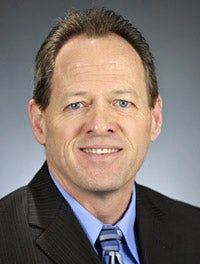Much legislative work is behind the scenes
Published 10:05 am Sunday, May 29, 2011
By Rich Murray, Capitol Conversations
Many times residents ask me what the biggest surprise has been about serving as a state representative. I usually tell them there’s a lot more to the job then pushing a “yes” or “no” button on the House floor.
It didn’t take me long to realize that if you’re going to be effective in the Minnesota House, you have to be willing to do some hard work behind the scenes.
The biggest difference I can make on any bill isn’t casting a vote on the measure on the House floor, but working on it when it’s being crafted in our House committees. One of the benefits of meeting with residents, local officials or school representatives is that they can share their input on proposed legislation. With this information in hand, I can return to the Capitol and sit down with the committee chairs and make suggestions as to how to make the proposal better.
A bill is seldom built on the House floor. It normally is debated in several committees before reaching the full House, and that is where a lawmaker who has done his or her homework can make a strong positive impact on future Minnesota laws.
So the next time you wonder why a representative or senator voted for or against a specific proposal, know that it may be the result of how effective he or she was at improving the bill through the committee process before it arrived for a full legislative debate.
Special session just ahead
The regular session of the 2011 Legislature has ended, and a compromise budget agreement has not been reached between Gov. Mark Dayton and legislative leadership.
I am disappointed that a special session is on the horizon. The Minnesota Legislature approved a balanced budget plan weeks ago. During the conference committee hearings on the plan, legislative committee chairs repeatedly invited Gov. Dayton and his commissioners to take an active role in the negotiation process so the Legislature could present the governor with bills that he would sign. In some cases we received input just days before session adjourned and in others we received no input at all.
We continued to get the sense that Gov. Dayton and his staff had refused to even read the bills we’d crafted over the past few months. Lawmakers were especially disappointed that all of the common sense reforms that we worked hard to enact — provisions that would not only make government more efficient but would save Minnesota’s taxpayers millions of dollars — were basically ignored.
There’s no doubt the Legislature and the governor had different ideas on how much Minnesota should spend on state government programs. But it would have been nice if he had worked with leaders to find common ground in a handful of areas as opposed to dismissing our work.
My guess is there’s probably a large portion of the budget where we actually agree. To me it would have made sense to identify those areas, approve them in a bipartisan manner, and then work on the remaining aspects where we were further apart. But that didn’t happen.
Spending proposal difference
Here’s a brief review of where we started and where things ended.
At the beginning of the year, the Legislature began session with the goal of proposing a nearly $32 billion budget, which is what Minnesota spent during the last budget cycle. Gov. Dayton responded with a budget that spent more than $36 billion and included a multi-billion dollar tax increase to pay for it.
The Legislature later responded with a compromise move to the middle of both proposals by passing a balanced budget of $34 billion that does not raise taxes.
Gov, Dayton moved his number down to $35.8 billion and insisted the Legislature pass a $1.8 billion tax increase on Minnesotans to make his numbers work. The full House debated his proposal, and opposed it by a 73-60 margin. Despite this, the Governor is criticizing the Legislature for not compromising further and for refusing to raise taxes on Minnesotans.
My opinion is this: The Legislature has approved the largest general fund spending plan in Minnesota’s history. It contains $2 billion in new revenue for government programs, and it can be accomplished without raising taxes. The governor and legislative leaders should have a thorough negotiation on the best ways to allocate $34 billion over the next two years, but to me, a $2 billion raise for state government ought to be enough.
Have a question or concern? Constituents in District 27A including communities in Freeborn and Mower counties can write to me at 439 State Office Building, 100 Rev Dr. Martin Luther King Jr. Blvd., St. Paul, MN 55155. Or call me at 651-296-8216 or e-mail me at rep.rich.murray@house.mn.
Rich Murray, R-Albert Lea, is the state representative for House District 27A.


